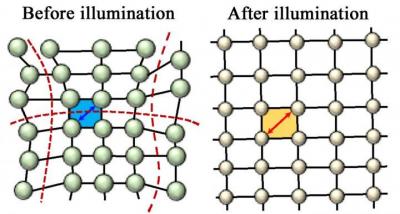A collaboration led by Rice University and Los Alamos National Laboratory has found that constant illumination reduces strain in a perovskite crystal lattice, and allows it to uniformly expand in all directions.

The expansion was found to improve the conversion efficiency, 'curing' defects in the crystal structure and allowing more electrons to move through the material. The researchers modeled over 30 iodide-based thin films with perovskite-like structures, and found that when exposed to light, the bonds between atoms relaxed and barriers between the perovskite layer and the electrode largely vanished.
The top performing device increased its efficiency from 18.5% to 20.5%, and the materials tested had an average raised efficiency of more than 19%. The cells retained around 85% of their peak efficiency after 800 hours of continuous operation at maximum power point, and showed no photo-induced degradation after 1,500 hours in operation.
'This work will accelerate the scientific understanding required to achieve perovskite solar cells that are stable,' Staff Scientist at Los Alamos National Laboratory Aditya Mohite said. 'It also opens new directions for discovering phases and emergent behaviors that arise from the dynamical structural nature, or softness, of the perovskite lattice.'